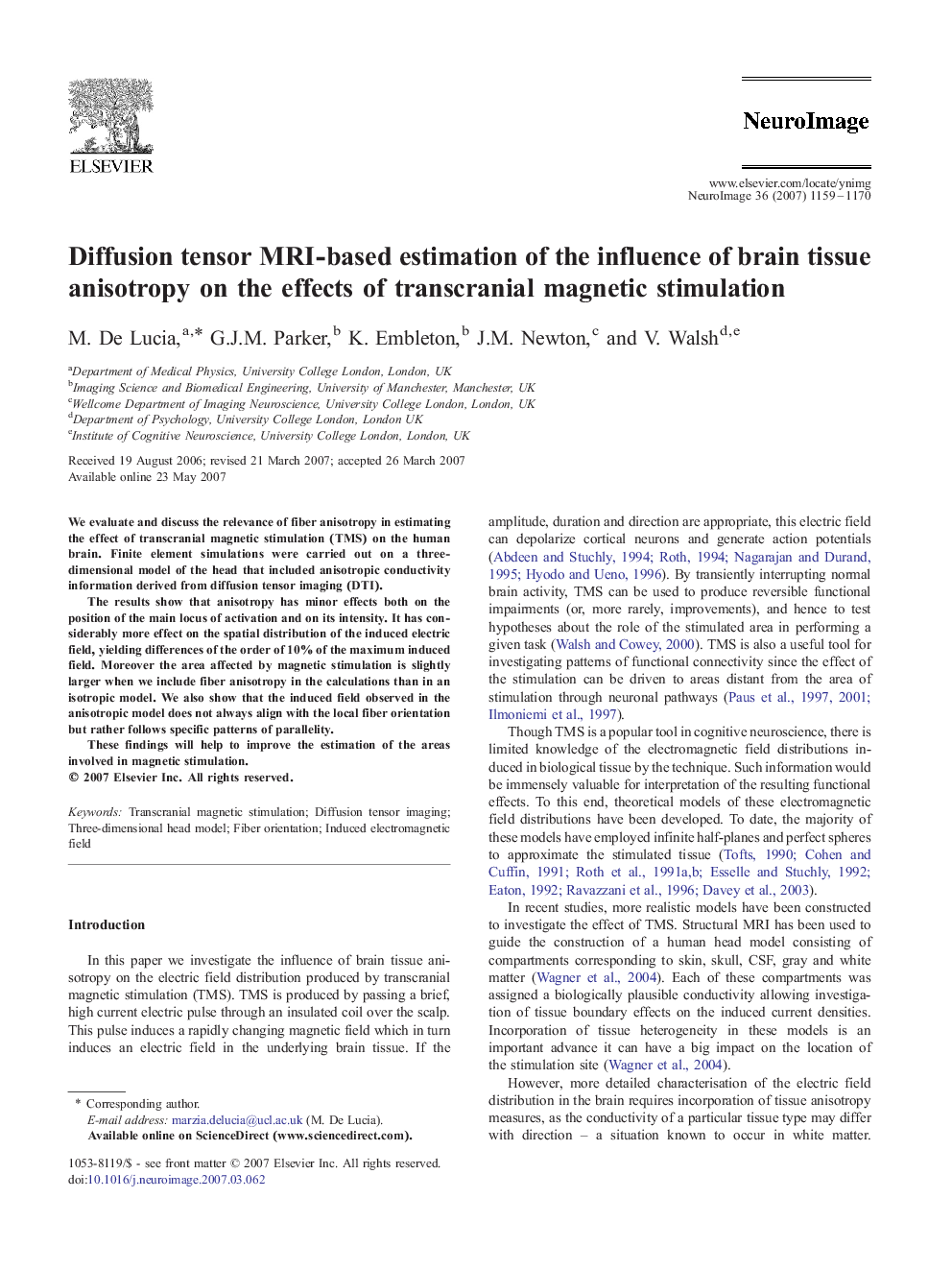| Article ID | Journal | Published Year | Pages | File Type |
|---|---|---|---|---|
| 3073616 | NeuroImage | 2007 | 12 Pages |
We evaluate and discuss the relevance of fiber anisotropy in estimating the effect of transcranial magnetic stimulation (TMS) on the human brain. Finite element simulations were carried out on a three-dimensional model of the head that included anisotropic conductivity information derived from diffusion tensor imaging (DTI).The results show that anisotropy has minor effects both on the position of the main locus of activation and on its intensity. It has considerably more effect on the spatial distribution of the induced electric field, yielding differences of the order of 10% of the maximum induced field. Moreover the area affected by magnetic stimulation is slightly larger when we include fiber anisotropy in the calculations than in an isotropic model. We also show that the induced field observed in the anisotropic model does not always align with the local fiber orientation but rather follows specific patterns of parallelity.These findings will help to improve the estimation of the areas involved in magnetic stimulation.
